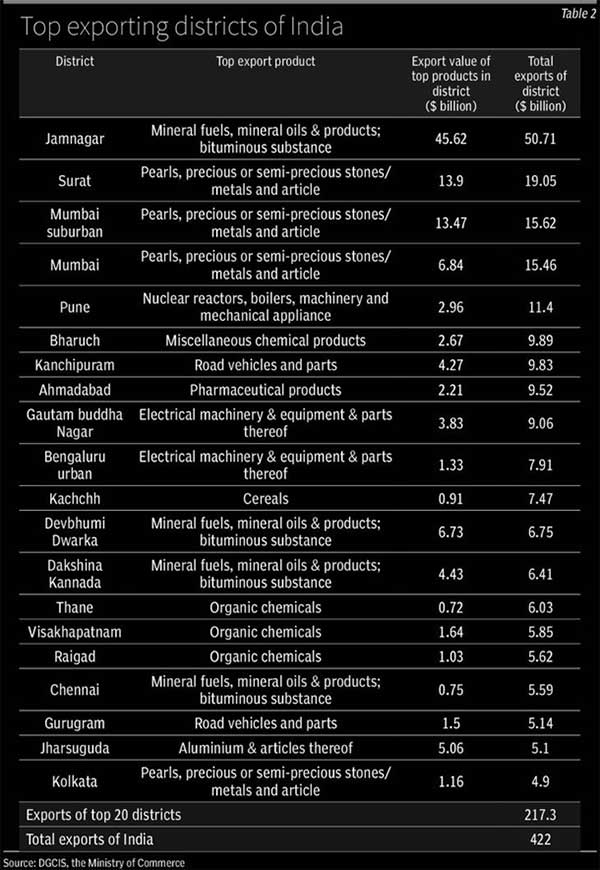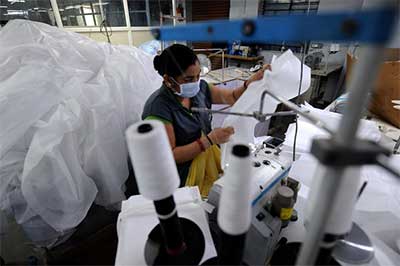Date: 17/11/2022
Relevance: GS-3: Indian Economy and Trade, mobilization of resources, growth, development; Effects of liberalization on the economy, changes in industrial policy and their effects on industrial growth
Key Phrases: Foreign Trade Policy (FTP), Remission of Duties and Taxes on Exported Products (RoDTEP), Rebate of State and Central Levies and Taxes (RoSCTL), Merchandise Export Incentive Scheme (MEIS), District as Export Hubs (DEH)
Context:
- India’s new Foreign Trade Policy (FTP), due to be released on September 30, was delayed owing to some last-minute changes in plans.
- This means FTP 2015-20 will remain in effect until the end of March 2023.
Background: New FTP will address growing global uncertainties
- The upcoming FTP might shorten the target window to three years (usually for five years) and grant flexibility in policy amendment during its implementation.
- These changes are aimed at:
- Addressing growing global uncertainties and their concurrent impact on global trade viz. outlook of a global recession, uncertain global capital flows, and high energy prices.
- Delinking the process of launching trade-related incentives schemes from the FTPs.
- Government’s previous a few decisions are in the spirit of the new FTP such as
- Announcement of Remission of Duties and Taxes on Exported Products (RoDTEP) and Rebate of State and Central Levies and Taxes (RoSCTL) schemes
- These schemes replaced the previous Merchandise Export Incentive Scheme (MEIS) under FTP 2015-20.
Remission of Duties and Taxes on Exported Products (RoDTEP) Scheme
- The RoDTEP scheme was launched in March, 2020.
- It is a scheme for exporters to reimburse taxes and duties paid by them which are not getting exempted or refunded under any other existing mechanism.
- Taxes and duties included in RoDTEP include value added tax, coal cess, mandi tax, electricity duties and fuel used for transportation.
- The RoDTEP scheme is in line with the WTO rules unlike the Merchandise Export from India Scheme (MEIS) that was found to violate the World Trade Organization Rules.
Rebate of State and Central Levies and Taxes (RoSCTL) Scheme
- The RoSCTL scheme was announced in March, 2019 by the Ministry of Textiles.
- The RoSCTL scheme was offered for embedded state and central duties and taxes that are not refunded through Goods and Services Tax (GST).
- It was made available only for garments and their products.
District as Export Hubs (DEH) in the new FTP
- The New FTP is expected to incorporate a new chapter on the District as Export Hubs (DEH).
- On inclusion the DEH will help make targeted interventions possible for existing pockets of districts across the country where the exports are concentrated.
- It is a sound policy decision in shaping and strengthening India’s export landscape and to make this policy succeed two things are critical-
- Selecting the right districts to promote them as export hubs is paramount.
- Understanding the current export landscape of India at State and district levels could aid in this regard as a first step.
India’s export landscape
- India’s goods exports stood at a valuation of $422 billion in FY 2021-22.
- It is $130 billion more (a 44.6% increase YoY) than the $291.8 billion recorded in FY 2020-21.
- India merely ranks 18th amongst its global peers.
- This relatively smaller size of Indian export is not commensurate with its GDP, which stands as the fifth largest in the world.
- States are backbone of India’s economic success
- India being a Federal Republic depends on the success of its state units as good exporters which in turn determine the national exports.
- It is surprising that out of the 37 units (29 States and 8 Union Territories), the top ten States account for 85.3 percent of India’s overall exports.
- The significant contribution comes from the top five States — Gujarat, Maharashtra, Tamil Nadu, Karnataka and Uttar Pradesh.
- These States alone contribute 66.8 per cent of India’s overall exports in FY 2020-21 (Table 1).
- It needs to be stressed that except for Uttar Pradesh, four out of the top five largest exporters are States located in the South and West of the country that benefit from coastal access.

- Significant Variations at district levels
- The export data show significant variations in performance at a district level.
- Out of the 766 districts in India, the top 10 percent of districts contribute 85 per cent of India’s overall exports.
- Only the top 20 districts (2.6 percent of overall districts) export goods worth more than $5 billion and contribute 51.5 per cent of the total exports (Table 2).
- Six districts in Gujarat account for about half of it, followed by five districts from Maharashtra (24 per cent), and another 20 per cent is associated with Tamil Nadu, Karnataka and Uttar Pradesh.
- The top exports from these districts are often commodities that are more susceptible to price volatility and shocks.
- Most surprisingly, 82 districts do not engage in any exports at all.

Way forward
- India’s economic dynamism depends on its States’ and districts’ robustness, particularly export strength.
- However, only a limited number of States and districts currently possess the economic vibrancy and contribute significantly towards its exports.
- Also, the majority of exports concentrate on non-manufactured goods.
Conclusion
- Variations at district and state levels and types of exports have to be kept in mind before launching potentially targeted schemes such as DEH.
- Therefore, a shortlisting process to select districts based on their strengths and export potential is the need of the hour which will aid not only in better targeting but also in the possible success of possible new initiatives such as the DEH.
Source: Business Line
Mains Question:
- Q. Few States and fewer districts are vibrant enough to become export hubs. Discuss relevance of the statement in light of India’s skewed geographical export potential which is limited by lack of investment and infrastructure. (250 words)







